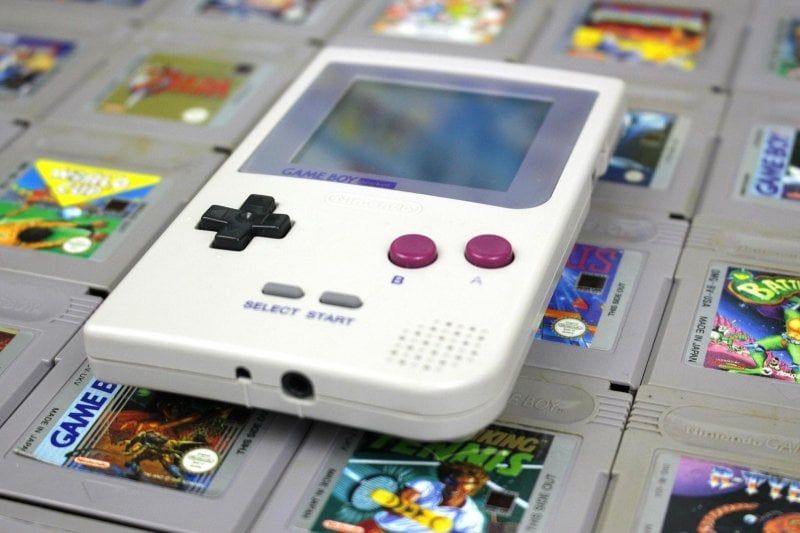Exactly thirty-five years ago, on the same day as the supposed foundation of the city of Rome, Nintendo launched its first portable console on the market: it was the April 21, 1989 when the Japanese started giving out Yen to buy Game Boys. In the United States the platform would arrive a few months later, on July 31st, while in Europe, in accordance with the delays common at the time, only on September 30th 1990. For millennials, “Game Boy”, at its peak, was a strong brand as much as PlayStation; with the difference that one of the two has survived to this day, and the other has long since disappeared.
For generation Z, Game Boy – in its Advance form, in particular – is instead a sort of watershed between the first to belong to the category and those who followed them, often growing up directly with Nintendo DS in their hands. It is a name still known to anyone who is even remotely passionate about video games, despite having disappeared from the market for twenty years, and this immediately suggests the success of the project.
Designed by Gunpei Yokoi, one of Nintendo’s main geniuses, Game Boy arrived on the market accompanied by a version of Tetris published by Nintendo itself: a more unique than rare move in the history of the Japanese company, which nevertheless proved successful. Having acquired the rights in such a daring way that it deserved a film, Nintendo found itself in its hands with the best possible killer application. Game Boy and Tetris made a perfect pair at the US launch. However, Game Boy differed from previous portable platforms, on a conceptual level, precisely because it was possible to change games using cartridges: unlike Game & Watch, with a single console it was this time possible to play many different works.
Nintendo found a perfect combination of price, size and technological capabilities. Game Boy it was certainly not comparable to home consoles, it had monochromatic colors tending towards greenish, yet it was a perfect synthesis between cost, quality of games and battery consumption. With Game Boy, Nintendo founded its main commercial pillar, the portable market, which would never betray it, and which continues today through Nintendo Switch.
Hardware and brand legacy
Game Boy sold, considering – as Nintendo does – all its colorful guises, just under 120 million units. He had the obvious merit of having created an entire market, the pocket one, which now continues, albeit in hybrid form, through Nintendo Switch… and beyond. Not only because, as video game enthusiasts, we tend to overlook what is the most lucrative sector today, namely the mobile one. There is no direct line that links smartphones to Nintendo’s first portable console, even if someone wanted to force the relationship by pointing out the existence of a completely secondary peripheral, and its primitive yet futuristic selfies, like the Game Boy Camera.
Despite this, a connection between the two worlds, albeit indirect, certainly exists: Nintendo DS was the spiritual heir of Game Boy and, at the same time, also the anticipatory platform of mobile gaming. Nintendo DS in 2004, well before Apple, put a technological device with touch screen and Wi-Fi support in the pockets of millions of people, and proposed titles, including some millionaire best sellers, which were aimed at “non-gamers”, to so-called casual gamers.

The most important lessons that Game Boy has left, with a view to shaping the perfect portable platform, are essentially two. One: the aforementioned balance between price, battery life and size. Giving priority to only one of these aspects would mean reducing the potential audience of the console, a lesson that Nintendo (and almost only it) has always taken into consideration. The second great lesson of Game Boy, this only from a commercial perspective, concerns the updates of the platform: Game Boy, Game Boy of various colors, Game Boy Pocket, Game Boy Light, Game Boy Color. It demonstrated how portable consoles were more easily variable, in appearance and functionality, than home consoles: a family is more likely to buy multiple versions of the same pocket platform, rather than the same home console.
Throughout its history, Nintendo has had no problem changing the brands of its consoles. In certain cases it was a necessary choice following a partial or total failure: we are referring to GameCube and Wii U, for example. In other cases, however, it was a very specific decision, far from forced: Famicom and Super Famicom (also in Japan) were replaced by Nintendo 64, so as to unify the identity of the platform at an international level. Game Boy and Game Boy Advance were replaced by Nintendo DS. At the time it was a prudent choice, so much so that DS was presented as the “third pillar” alongside Gamecube and Game Boy Advance: had it failed, a new Game Boy would probably have arrived a few years later. Yet, also thanks to the success of the DS, the Game Boy name would never return: a completely anomalous choice for the video game market, which usually abandons a brand only when it no longer works. In retrospect, and in an unforeseeable way, a wise choice: despite the prestige, Game Boy would not be usable in 2024. Nintendo tries to reach the largest possible audience, and the clearly male (and age) reference of “boy” it is now anachronistic.
Software legacy

There have long been rumors of a Game Boy Classic Mini, in the wake of NES and SNES: however, exactly like Nintendo 64, despite for different reasons, it never arrived. Nintendo 64, loved by enthusiasts, never achieved the diffusion of its two predecessors: Game Boy, although it is still a platform that is also still revered in terms of design, has software that is difficult to appreciate – today – by the masses. Games tend to be monochromatic, often essential or short: barring level design miracles like The Legend of Zelda: Link’s Awakening or Super Mario Land 2, a current teenager would hardly be able to appreciate Game Boy titles, unlike the NES and SNES ones. Furthermore, the “fashion” of Mini Consoles now seems to have passed: Nintendo will probably continue to re-propose the classic Game Boy as it did on Switch, that is, to encourage and increase registrations for its online services.

There is a major anomaly in Game Boy sales: you can notice it yourself, observing its success year after year. Video game platforms tend to have a parabolic trajectory: they start, they grow, they reach their peak, they decline, they die. Game Boy, in full decline (in 1995), had a new, completely unexpected peak, which prolonged its life for years to come: that peak had a specific cause, and it was called Pokémon (Red and Blue in Italy). Almost all the best Game Boy games up to that point had been reductions or adaptations of sagas born on the NES (or elsewhere): Super Mario, Tetris, The Legend of Zelda, Metroid. There are three main exceptions to this logic: Wario Land, which however is now a brand, we want to be optimistic, sedated. Kirby, born on the Game Boy in 1992, with Kirby’s Dream Land (directed by Masahiro Sakurai), a series (and a character) that is still very successful, which however has never been solely linked, genesis aside, to the pocket world.

Pokémon, from its debut onwards, has always advanced hand in hand with Nintendo’s portable consoles, often determining their success. No platform that has hosted a major episode of the saga has ever sold fewer than fifty million units. This, together with having originated the pocket market, is precisely the main legacy of the Game Boy. Switch is a syncretism of everything that Nintendo has been in the past, Game Boy included, and this very DNA represents the reason why Nintendo should develop its successor with relative tranquility: Super Mario and The Legend of Zelda as killer applications are not a guarantee, depend on many factors, while Pokémon does. A condition that perhaps will not last forever, but which at the moment still seems very solid. And just as in the late 90s you had to buy Game Boy to play Pokémon, in 2025 (or 2026) you will have to buy “Switch 2” to have the new generation of Pokémon. Also called, not coincidentally, “pocket” monsters.









